Introduction
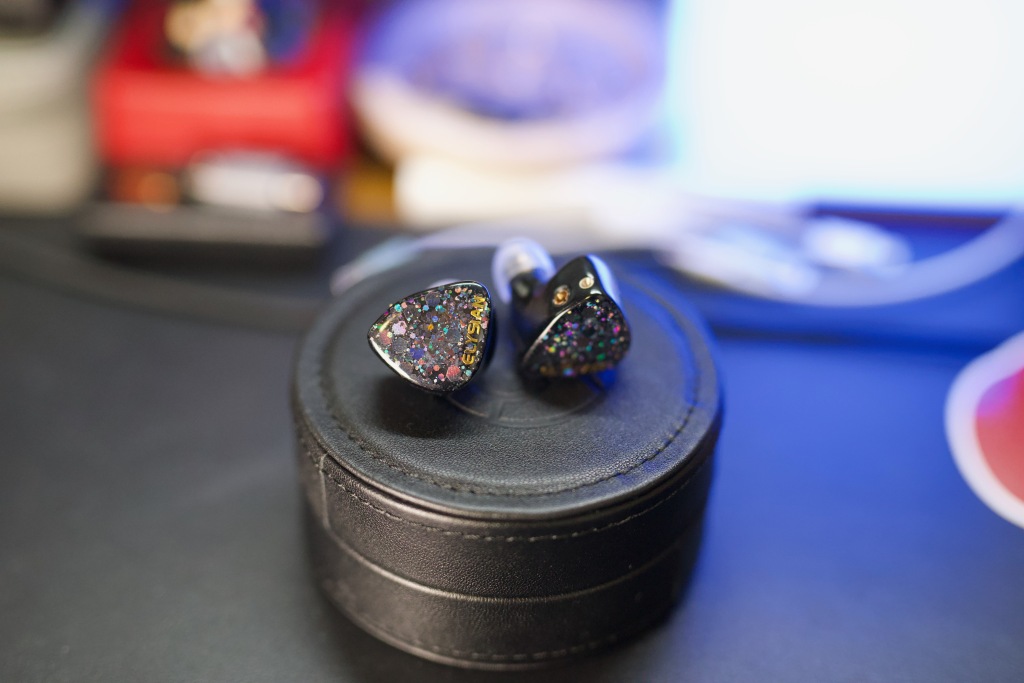
For those unfamiliar, Elysian Acoustic Labs is a one-man business owned and operated by Lee Quan Min out of Malaysia.
It has humble DIY roots that started with Lee attempting to re-shell an old pair of Ultimate Ears IEMs. As his skills grew, Lee developed a local following and incorporated Elysian Acoustics Labs in 2016 to start taking orders.
Gaining experience, Lee started developing IEMs with his own unique house sound. One of his creations, the now famous Elysian Annihilator, won him the Fujiya Avic x Foster Alliance Program IEM competition in 2019 for its implementation of the Foster dynamic driver.

Leveraging the Annihilator’s success, Elysian Acoustics Labs, once a hidden gem in the audiophile community, broadened its product line to introduce the Elysian X and Diva. Of the two, the Diva is the most “affordable” option priced at $1600 USD at the time of this writing.
The 2023 revamp of the Diva includes updates to its crossover circuit and internal wiring. According to Lee, the internal wiring now uses different materials for each of the low, middle, and high frequencies contributing to an overall smoother presentation.
The Elysian Diva used for this review is a personal unit. All of my IEM reviews are reviews of personal units unless otherwise specified.
Unboxing
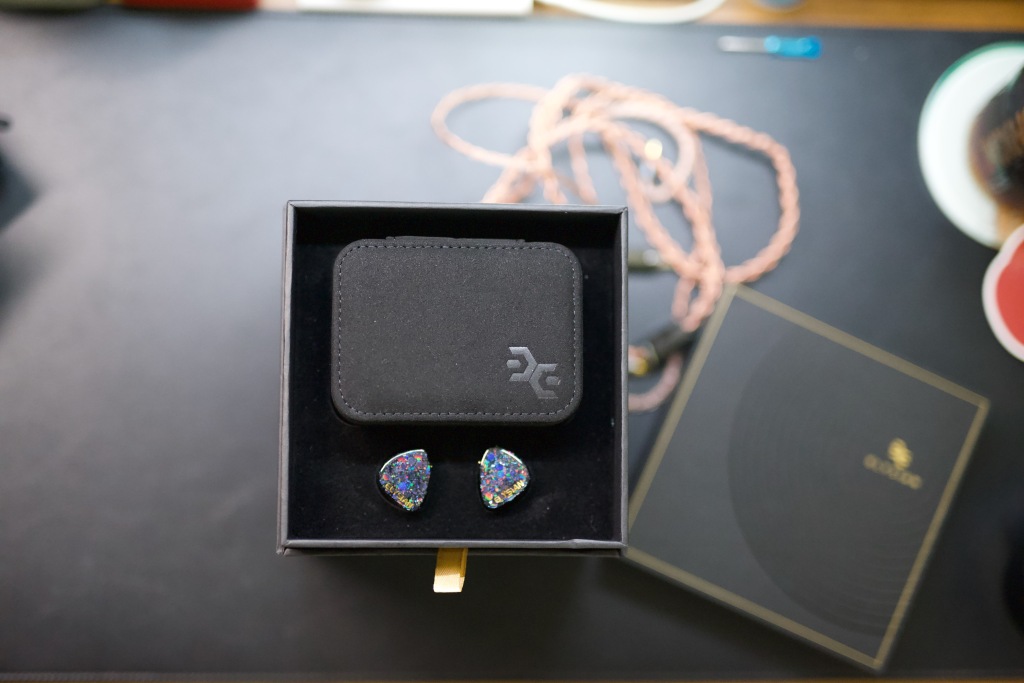
The Diva’s unboxing experience feels very premium but I ran into some issues which I’ll get into in a second. First, let’s look at what’s inside.
The Diva’s box is cubic with multiple drawers housing different tangibles:

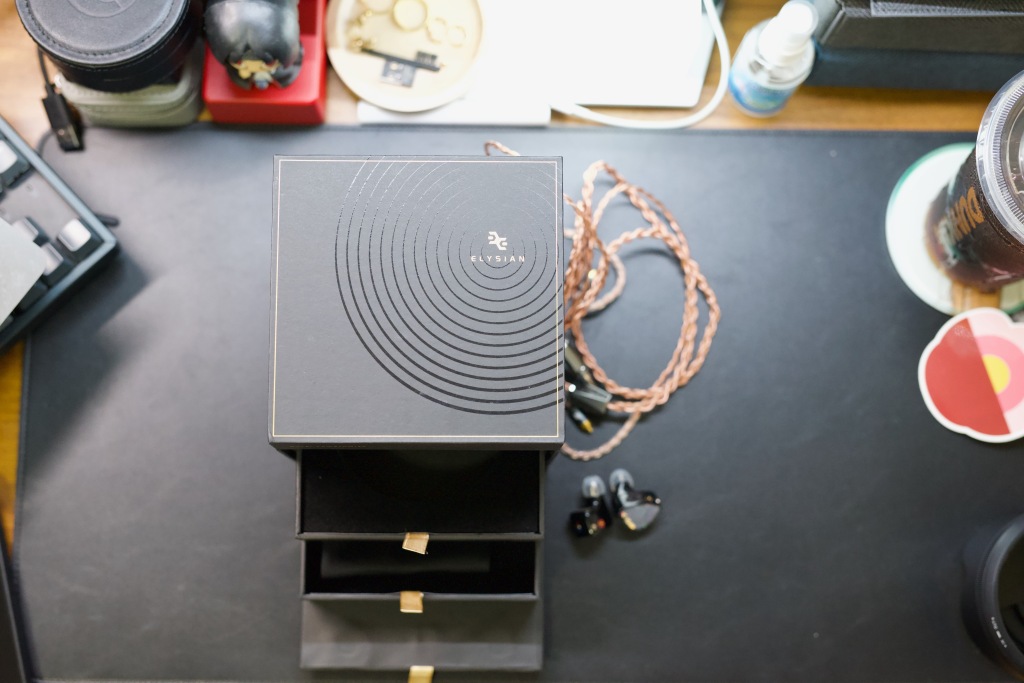
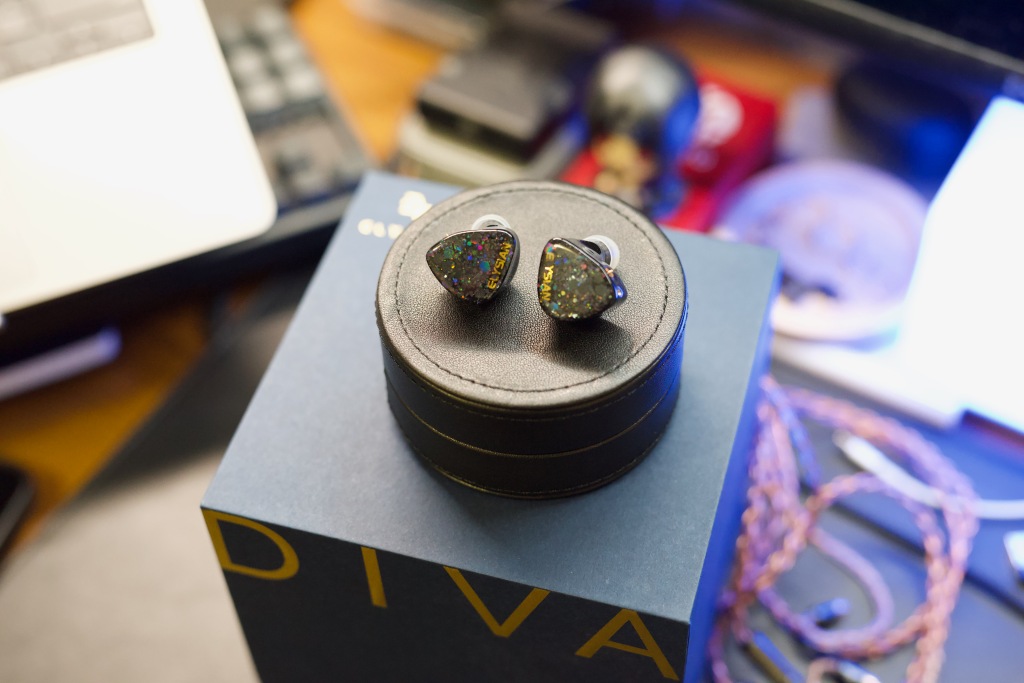
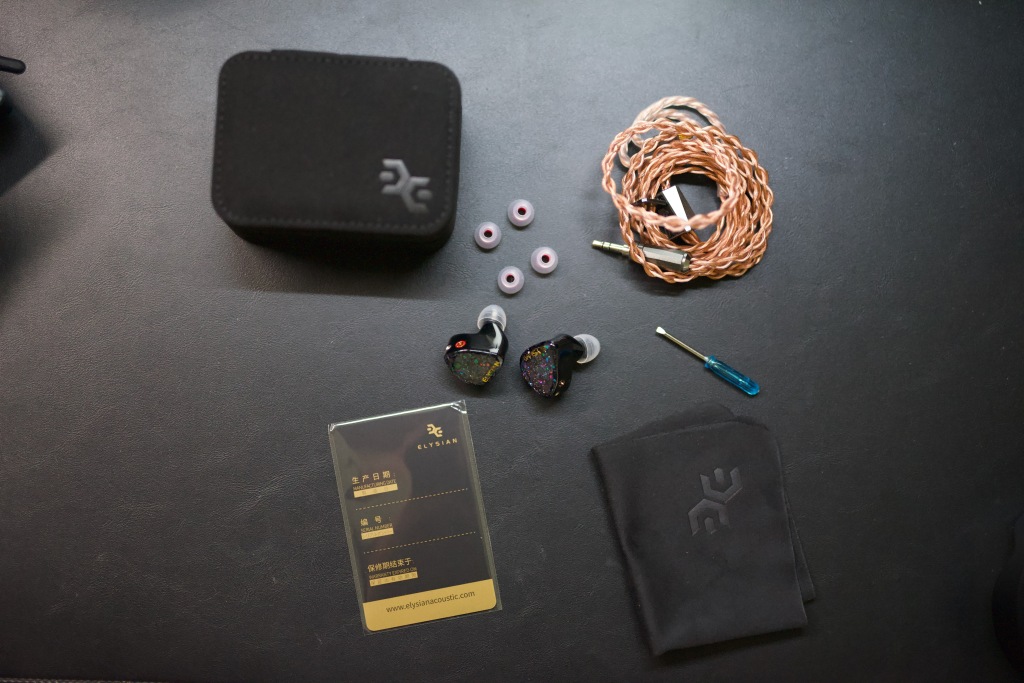
Included are the following:
- The Divas
- S/M/L SpinFit ear tips
- Suede carry case
- Small flathead screwdriver (to switch between bass settings)
- Effect Audio Ares S cable
- Microfiber cloth
- Card of authenticity
The Effect Audio Ares S cable exudes quality. It’s beautiful to behold and has a notable weight that conveys a sense of durability. The cable is on the thicker side though and is prone to hold its shape at times.
My biggest gripe with the cable is that the cinch doesn’t work. The cinch is very loose rendering them more ornamental than functional. This small problem aside, it’s one of the highest-quality stock cables I’ve encountered so far.
Build Quality Issue
I’d like to address an incident I encountered. While tip-rolling one of the nozzle covers detached along with the ear tip. I believe this to be an isolated incident as I heard Lee takes great care in constructing each individual IEM.
I could have exchanged the Diva for a new unit but ultimately I decided to very carefully reattach it with a small amount of glue. Don’t try this at home.
Comfort
The Diva’s shells are quite large and protrude beyond the ears when inserted. The nozzles are on the larger side which may cause a contentious fit for individuals with smaller ear canals.
Despite its size, the Diva is surprisingly lightweight and ergonomic. Therefore if they do fit most people should find them okay for comfort.
The stock SpinFit tips have a grippy texture making them easy to keep in place and helping create a secure seal. I was able to wear the Diva for extended periods without discomfort.
Sources
I used the following sources during my review process:
- Chord Mojo
- Questyle M15
- HiBy FC6
- Apple Dongle
- iPhone 13 Pro Max
I tested the Diva using lossless files and I had no issues driving it on any of my sources.
Sound Impressions
Lows
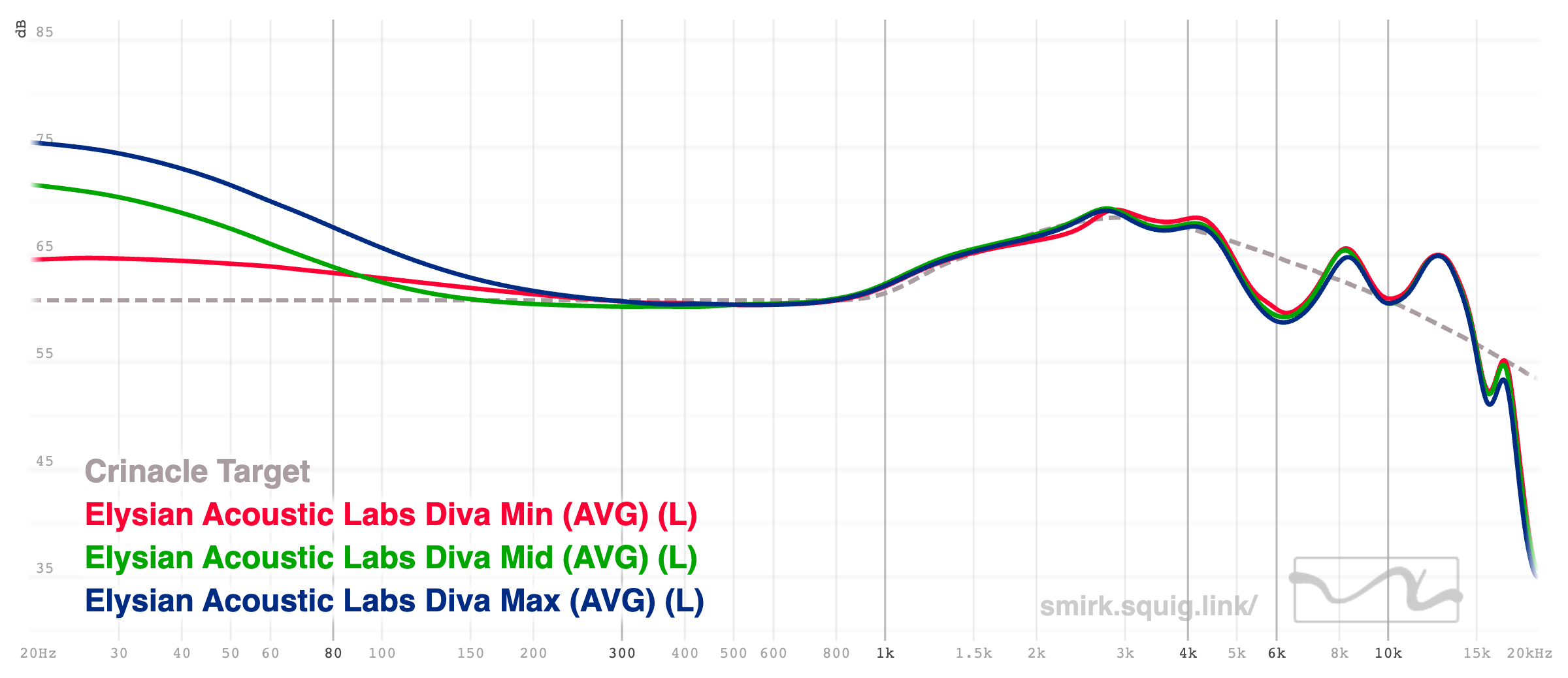
Measurements were taken on my personal IEC-711 clone coupler.
This is the averaged frequency response of the Diva on each of its bass settings.
The Diva’s bass offers tuning flexibility via its 3-way bass switch and is excellently tuned across all its bass settings. The Diva has a 6 balanced armature (BA) driver configuration.
The frequency response of the Diva can be briefly summed up as bass-boosted neutral.
The middle and max bass settings have elevated sub-bass giving the Diva satisfying levels of rumble even if it lacks the rich texture and organic quality found in the bass of dynamic drivers.
The middle bass setting dips earlier than the other settings giving it comparatively less mid-bass and some lower midrange darkness. This region has very similar tuning to that of the Variations.
The min bass setting has much lower sub-bass levels than the other settings but actually has more mid-bass than the middle setting.
The Diva’s bass has a decent weight but its transient edges have a soft, cushioned quality. This lack of edge definition hinders its ability somewhat to deliver a proper slam.
In comparison, the Symphonium Helios has better-defined bass transients and a greater mid-bass density giving it a more pronounced slam.
The Helios also has a slightly tighter, more controlled bass. The Helios, like the Diva, is also an all-BA set.
Mids
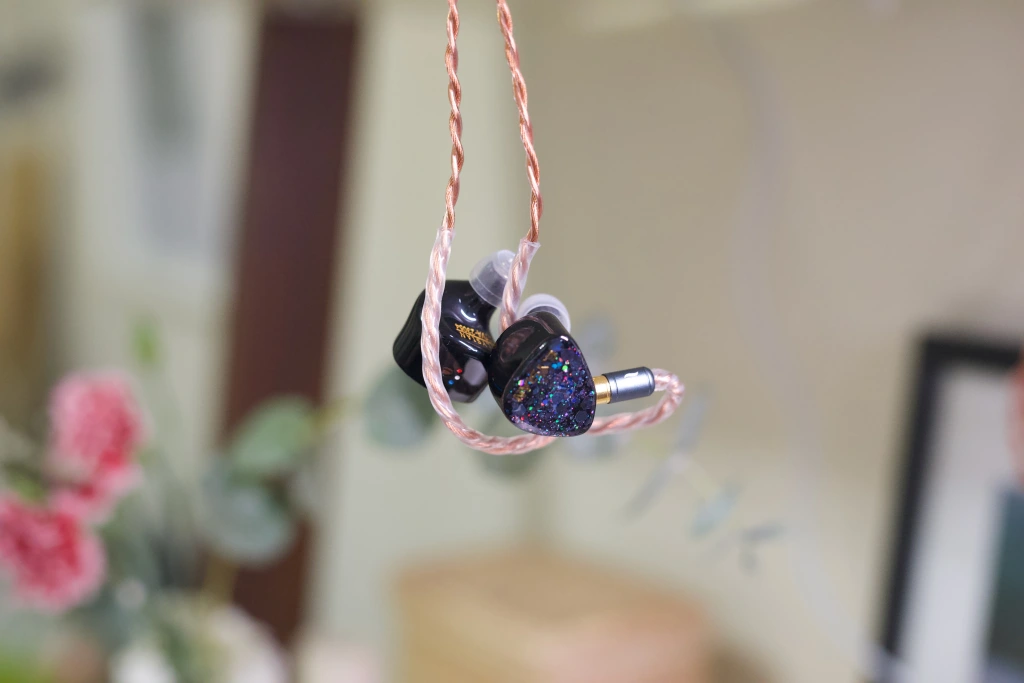
The standout feature of the Diva is its midrange. The midrange is lush, smooth, and addictive, particularly for female vocals.
There’s a slightly ethereal quality to vocals but they’re not wispy or thin by any measure. On the contrary, vocals sound full and are placed slightly forward.
The Diva is slightly elevated from 1.5-4.5kHz creating extra upper midrange energy that toes the line before easing gently into the lower treble. Despite its slightly aggressive pinna gain region, shout is mostly a non-issue.
Highs
The Diva has a commendable treble response that makes wise tuning choices.
There is a lower treble dip from 4.5-7kHz and an upper treble roll-off after 18kHz. The roll-off may be preferable for listeners like me that are sensitive to the uppermost frequencies.
Those that are not may prefer elevations in the upper air regions like the U12t provides which can contribute to a sense of openness, transparency, and detail.
The lower treble dip prevents shrillness and sibilance at the cost of some perceived clarity. The Diva’s upper midrange focused tuning causes the lower treble to be slightly overpowered. Notably, cymbals in this region come across dark and appear to have a shorter, premature decay.
Despite these issues, the Diva’s aggressive upper midrange juxtaposed with its relaxed lower treble gives it an engaging yet mostly non-fatiguing sound.
Detail and Imaging
The Diva has good detail retrieval and solid imaging but not necessarily for its price. I’m going to use the Moondrop S8 ($700) to draw a comparison.
The Diva’s soundstage is slightly larger and individual sounds have more space than on the S8. However, the S8 matches the Diva for detail resolution and accuracy of positional cues.
To clarify, the Diva isn’t lacking in these metrics. The S8 is known to have technical chops that hit way above its price tag, still, this illustrates that the Diva’s resolution and imaging aren’t standout features for its price tag.
Tonality
The Diva’s tonality can be described as slightly unnatural yet vibrant and addictive. It’s a unique sound that I find enjoyable but sometimes I like to switch it up by listening to a more natural-sounding IEM as a way to “palate-cleanse”, so to speak.
I’d recommend demoing the Diva if you can before putting money down for a pair as the Diva’s tonality may not be for everyone.
Dynamics
The Diva’s dynamics are excellent. It’s easily class-leading and plays in the same league as the U12t. The Diva has a huge dynamic range and the way it rides large dynamic swings is exhilarating.
In large part due to its dynamics, the Diva is one of the most exciting IEMs I’ve heard to date.
Shortcomings
Here’s a list of a few shortcomings of the Diva:
- Solid resolution and imaging for its price but could be better.
- A slightly unnatural tonality that listeners will either love or hate.
- Soft, rounded bass transients diminish bass slam.
- Build quality issue concerning the nozzle covers.
Intangibles
Intangibly the Diva stands out as one of the most exciting IEMs I’ve ever heard. Its Elysian house sound combined with great dynamics makes music feel moving. It’s difficult to fight the urge to dance or nod my head. The Diva provides a unique take on music that I really appreciate.
Comparisons

Diva vs. U12t
Let’s get one thing out of the way: the U12t is the more detailed and technical monitor. What the Diva offers is more fun while still backing it up with solid technicalities.
The U12t’s midrange has a natural tonality and is more recessed compared to the forward, colored midrange of the Diva. The Diva’s tonality adds an ethereal, vibrant quality to its midrange accentuating female vocals in particular. The U12t’s midrange plays no favorites.
The dynamics, treble, and bass performance of the U12t and Diva are both exceptional and on par with each other’s. Both have some of the best BA basses, however, they both exhibit rounded bass transients and lack some bass density required to deliver a truly impactful slam.
Both the U12t and Diva offer flexible bass tuning. The U12t achieves this with swappable APEX modules while the Diva has a 3-way bass switch. These features allow users to adjust the bass according to their preferences adding versatility and value to these IEMs.
If you’re looking for a safer option the U12t is a great choice because of its natural tonality and well-roundedness. It’s less opinionated, more refined, and possesses better technicalities. It’s also $400 more expensive.
If you want something unconventional that provides a fun and addicting sound, the Diva is a solid choice. It has good technicalities and is ideal as a complementary pair to mix up your listening with its unique take on music.
Diva vs. Variations
In a nutshell, the Diva is a more technical, opinionated Variations with better intangibles. There are large tuning overlaps between the Diva and Variations.
The Variations’ tonality is more natural but it also carries some rawness in its sound. The Diva presents smoother, especially in its midrange. The Variation’s midrange is good as well but is, in a word, standard.
The Variations possess good dynamics but the Diva’s dynamics are significantly better as they should be for three times the price.
Where the Variations starts to trade blows is in the bass. The Variations utilizes a dynamic driver for its bass giving it a rich texture and an organic quality that the Diva can’t match. The Diva can still rumble and has great BA bass but I prefer the bass quality of the Variations.
The Variations can be seen as a more neutral-sounding, less technical Diva. The Diva is more technical overall but it’s not a big gap. For a third of the price, the Variations is a great option and is still somewhat of a benchmark in its price range.
Diva Vs. Helios
The Helios and Diva are very different beasts. The Helios is a little drier and more clinical sounding than the Diva but this isn’t necessarily a bad thing.
Even though the Diva and Helios have similar detail retrieval and imaging chops the Helios sounds better resolving. This is due to the Helios being more linear from 3-6kHz. The Diva has a peak and a dip in this range creating a distinct contrast between these regions. The upper midrange can sound overemphasized at times overshadowing lower treble details like cymbals.
The Diva’s tuning has a midrange focus while the Helios’ has a bass and treble focus. The Helios’ bass has more body and better-defined transients giving it more slam. The Diva does have more sub-bass quantity and flexible bass tuning which is a plus.
The Helios’ midrange is decent if somewhat dry, cold, and clinical sounding – the opposite of the lush, emotional midrange of the Diva.
The Helios has a linear and exceptionally clean treble response. It provides a generous amount of sparkle without any zing. While the Diva does possess some sparkle, it falls short compared to the Helios’.
While the Helios and Diva are both well-rounded in their own ways, the Helios is better suited for genres that require bass slam like EDM and for orchestral compositions that demand clarity and incisiveness.
The Diva is also capable of handling these genres but as its name might suggest, it truly stands out when it comes to pop music and vocals.
Conclusion

It’s my opinion that IEMs priced above a kilobuck should offer more than just impressive technical capabilities – they should possess a unique element that justifies their asking price. After all, one can find commendable technical performance well below the $1000 mark.
Based on this criterion I can confidently say that the Diva has the sought-after x-factor that all high-end IEMs strive to attain.
For those that want to experience the Elysian sound, the Diva is a great entry point and I dare say, a good value due to its flexible bass options, solid techs, and great tuning.
What’s Next
- The Symphonium Helios and 7th Acoustics Supernova have arrived! It’s been a treat to get some listening in on these.
- I also have the Elysian Annihilator 2023 arriving later this month. I’ll be releasing written reviews on all of these in the near future.
As always, thank you and stay tuned!
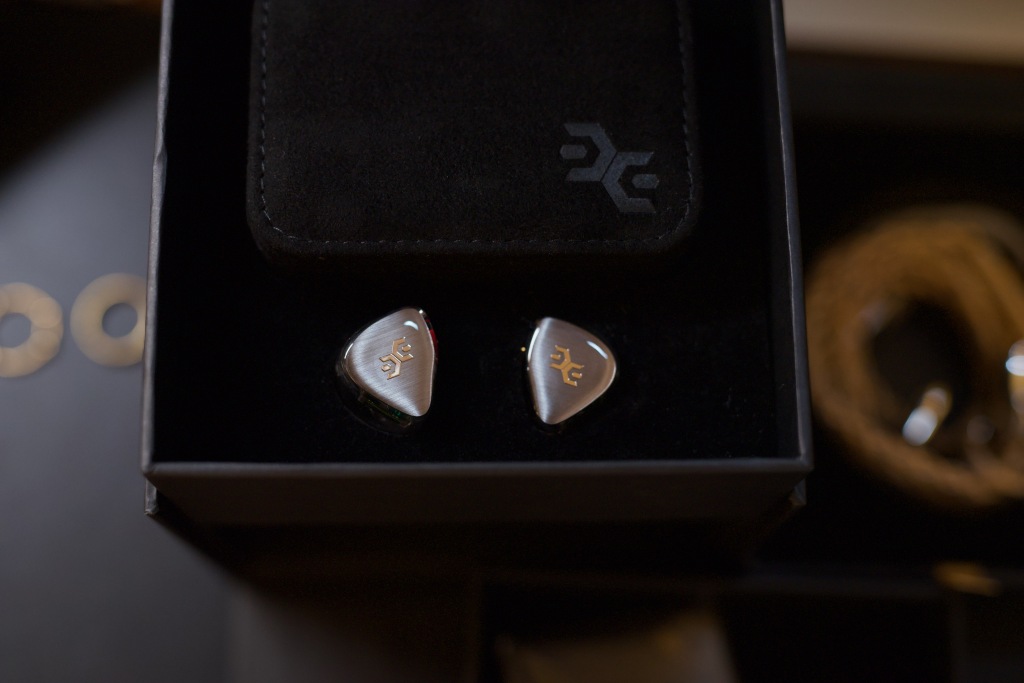
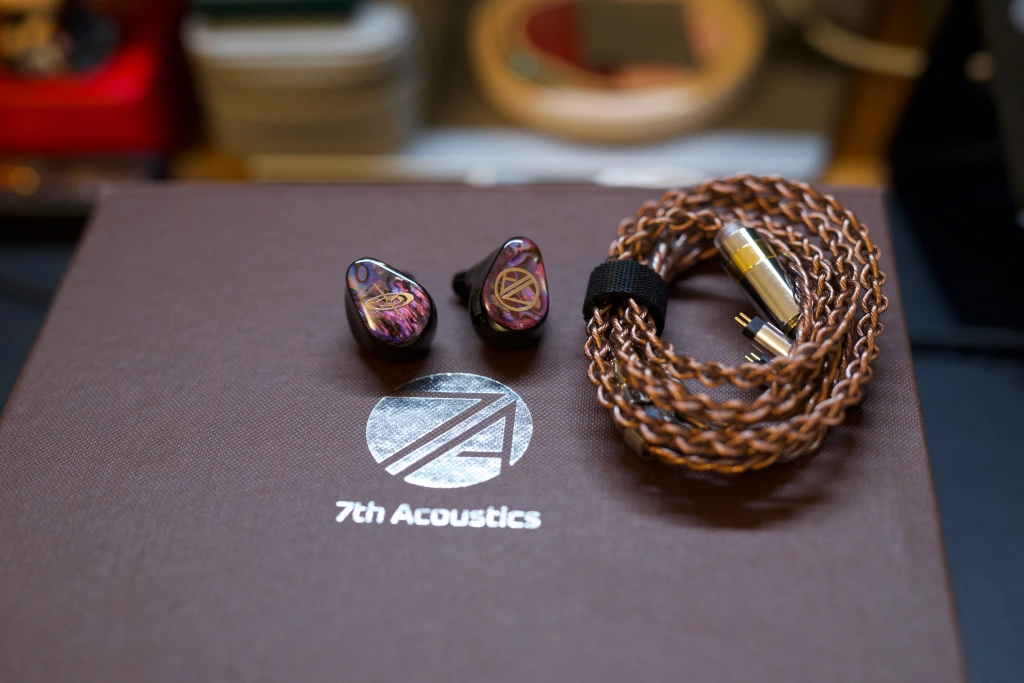
Leave a comment